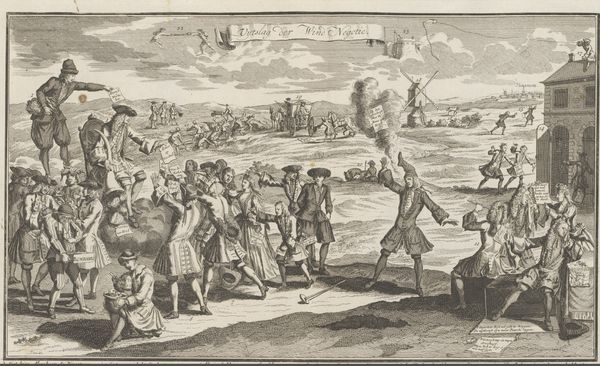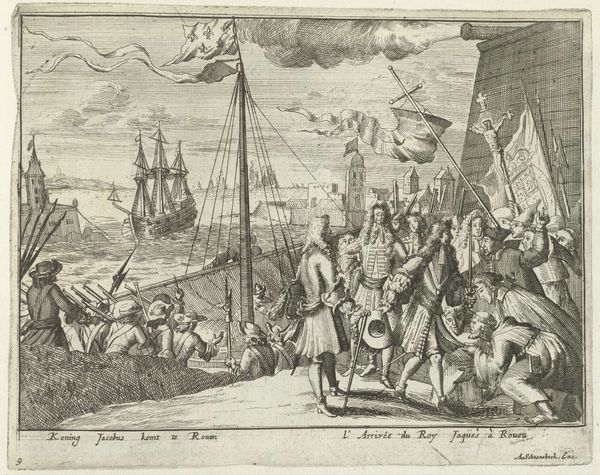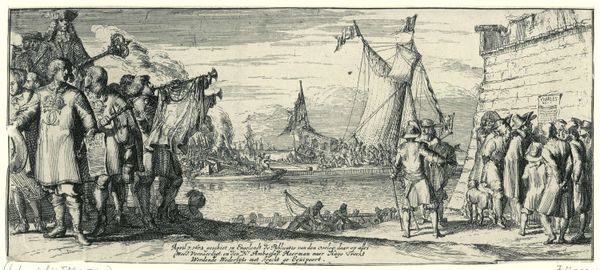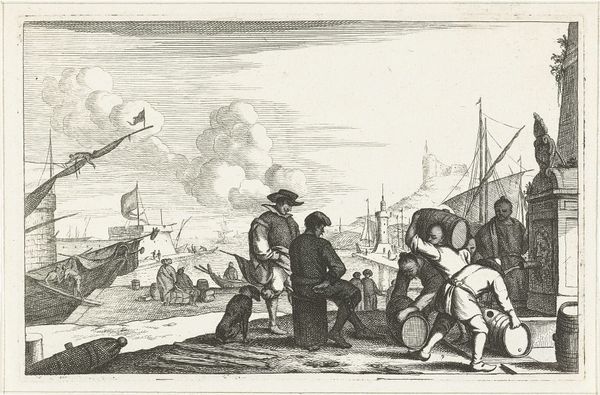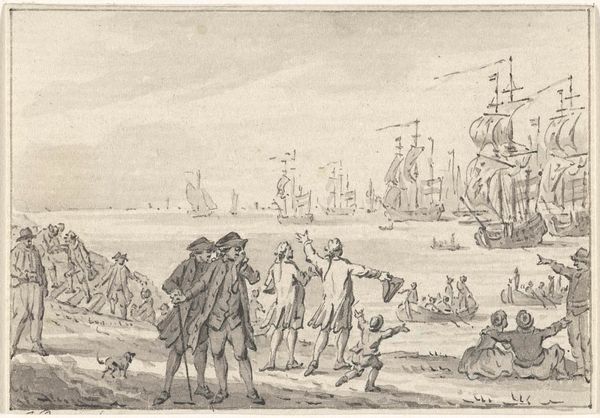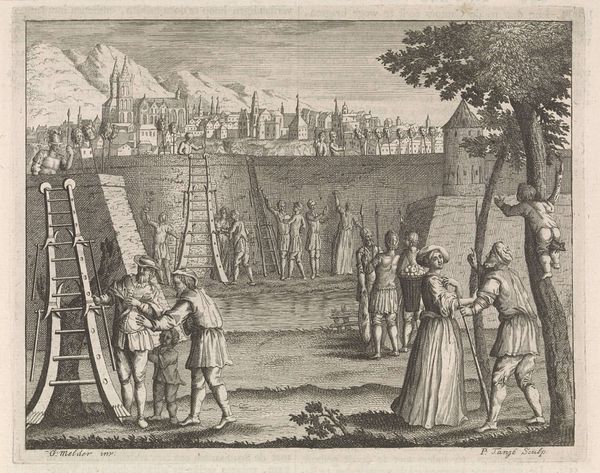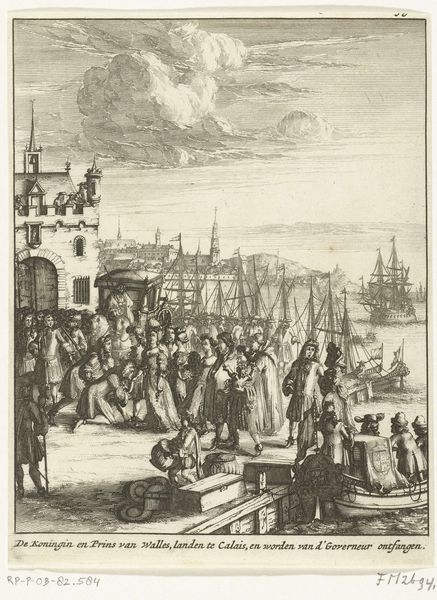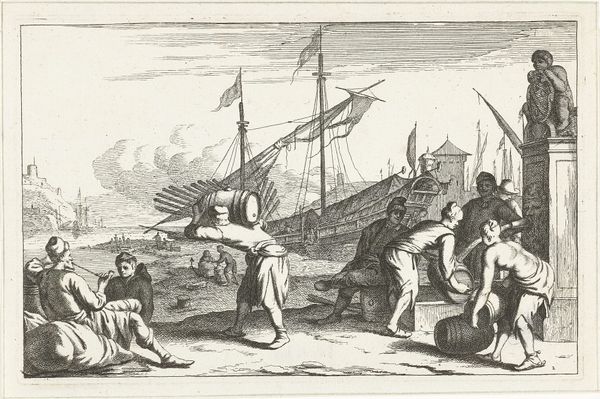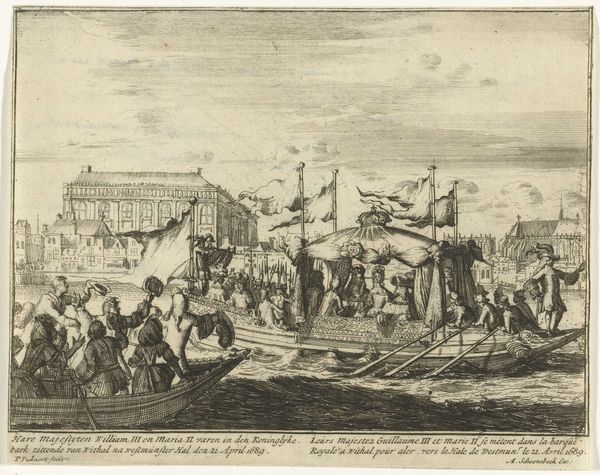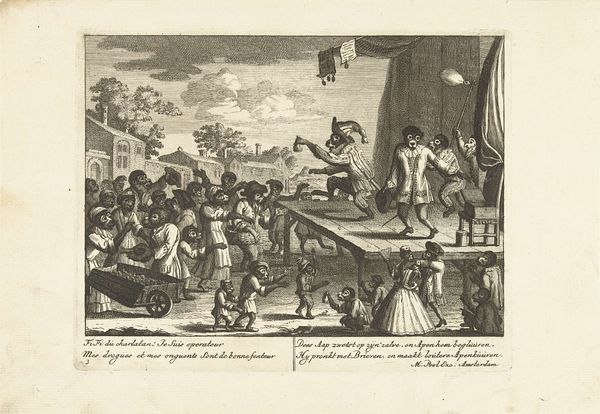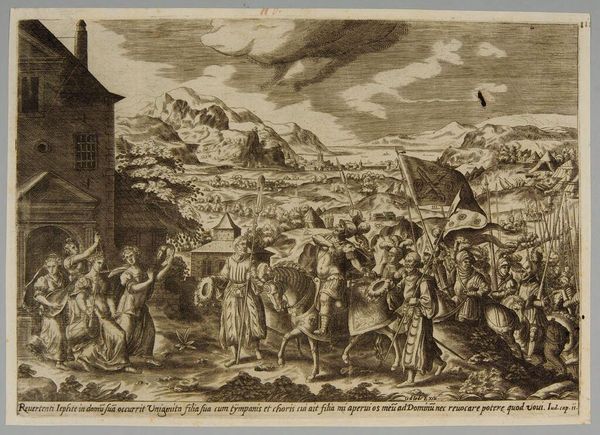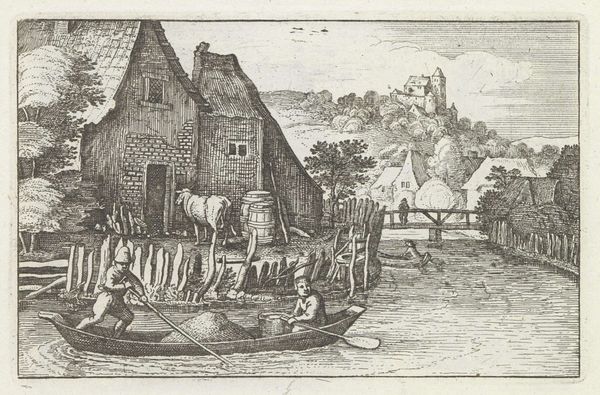
print, engraving
#
allegory
#
baroque
# print
#
landscape
#
figuration
#
line
#
history-painting
#
engraving
Dimensions: height 168 mm, width 243 mm
Copyright: Rijks Museum: Open Domain
Curator: This black-and-white engraving, created in 1745 by an anonymous artist, depicts an "Allegory on the landing of the young pretender in Scotland." It's brimming with detail. What catches your eye initially? Editor: The starkness. It's an intense scene depicted with such precise lines, it's almost like witnessing history etched in metal. There's a sense of immediacy that contradicts its age. I am curious about the materials used. What can we tell of the engraver’s process by looking closely at it? Curator: Absolutely. Let’s consider that. This engraving emerges in a charged political climate. Scotland’s Jacobite rising in 1745 to restore the Stuart monarchy and remove the House of Hanover from the British throne. And you see it represented here through allegorical figures as the Jacobite army approaches and lands in Scotland in 1745 with their battle-ready ships. Editor: Fascinating. So, this print—the *means* of distributing information and ideology during that time—becomes a material weapon, aimed at influencing public sentiment. But it strikes me that it also perpetuates hierarchy. The engraver, in their selection of scenes, shapes not only the way this history is to be interpreted, but who gets to be the hero. The depiction of land under siege—it almost appears post-colonial. Curator: Exactly! The context allows us to question not only what’s depicted, but whose version of events is being memorialized. We're not just looking at an event, but a curated narrative serving political ends. And it touches upon themes such as British imperialism but at its roots is a colonial conflict and not without bloodshed. This all-over print suggests a landscape altered in dramatic fashion by force—we see these Jacobite rising rebels landing with an agenda—as we analyze their materiality, technique, and sociohistorical contexts we must engage with questions of politics and power in all its form. Editor: And to circle back, understanding the materiality of prints like these highlights how these power dynamics were, quite literally, pressed onto paper. The material speaks to something beyond representation. Curator: Indeed, viewing art this way really complicates simple hero-worship, allowing us to analyze prints like this as active players within political machinations rather than inert illustrations of a distant past. Editor: It is incredible how revealing a second look can be.
Comments
No comments
Be the first to comment and join the conversation on the ultimate creative platform.
